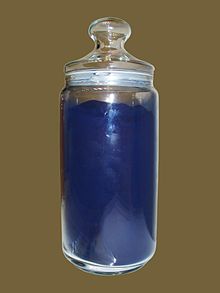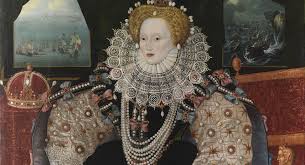Dear Friends and readers,
To welcome 2020 and a new decade, I want to share my enduring fascination with what made Elizabeth I an astute politician, one of the most successful European rulers of her time, some even say her millennium? What eccentric vignettes can shed light on how she and her councillors managed crises and each other?
 The saga of woad, a plant for dyeing fabrics, gives us a hint. Elizabeth’s cultivation and attempted repression of woad has titillate me ever since I read Joan Thursk Economic Policy and Projects. The Development of a Consumer Society in Early Modern England. Hang in there friends, it’s more dramatic than sex!
The saga of woad, a plant for dyeing fabrics, gives us a hint. Elizabeth’s cultivation and attempted repression of woad has titillate me ever since I read Joan Thursk Economic Policy and Projects. The Development of a Consumer Society in Early Modern England. Hang in there friends, it’s more dramatic than sex!
Historians describe the weakened nation Elizabeth inherited in November 1558: massive trade deficits; a currency so debased foreign lenders refused payment in English coin; extreme vulnerability to inflation because of dependence of imports and poor currency to pay for them; a Crown budget deficit; religious turmoil and two foreign wars.
But within ten years her governance had turned all this around. Elizabeth and her trusted adviser, Principal Secretary (later Treasurer) Sir William Cecil, hit the ground running. They granted a dizzying array of patents for innovation in manufacture, growing or mining raw materials to stimulate domestic industries and an internal supply chain: “New Draperies” like knitted stockings, hats, gloves, buttons, starch, silver and gold thread, linens, canvas, sailcloth. Then there were small ovens, pots, metal works, pins, nails, solid soap. Cultivating woad for dye and oil from seeds supported the new processing and manufacture. The surge in activity resembles China’s surge in the 1980s.
Essential for dyeing cloth, woad was imported from France, Portugal, Spain and German states. In 1559, Elizabeth’s first Parliament legislated incentives to grow woad, asserting that French woad exporters were the wickedest  robbersi n all the world. It wasn’t true, but useful. The industry took off, helping move England from an exporter of raw wool to a producer and exporter of finished goods At its early peak, there were 5,000 acres growing woad employing 20,000+ men, women and children. A family dependent on fixed wages for other labor could add 60% income in the season. Woad generated six times the revenue grain did. Since three was a prohibition on exporting surplus grain, limiting growth, farmers loved woad.
robbersi n all the world. It wasn’t true, but useful. The industry took off, helping move England from an exporter of raw wool to a producer and exporter of finished goods At its early peak, there were 5,000 acres growing woad employing 20,000+ men, women and children. A family dependent on fixed wages for other labor could add 60% income in the season. Woad generated six times the revenue grain did. Since three was a prohibition on exporting surplus grain, limiting growth, farmers loved woad.
Be careful what you wish for! Success exposed curious blind spots in Elizabeth’s thinking and tactics.
The core problem: imports were taxed, not exports. Trade surpluses meant plummeting Crown revenues. This made Elizabeth REALLY grumpy. She demanded remedies. A back and forth between Sir William Cecil and the chief customs collector, Sir Thomas Smith, ensued. Smith wasn’t alarmed by declining import taxes, arguing greater benefits from increased domestic employment. Tax exports, he suggested.

Elizabeth refused any adjustment to tax structure. She opted instead for repressing woad. On October 14, 1585, she issued a proclamation: “No person was to break up ground for the present nor to sow woad within four miles of a market or clothing town.”
Like most royal proclamations, she framed her ban as a generous response to popular complaints against woad as a sever threat to adequate grain supplies. Given woad’s popularity among grain farmers, it was likely an exaggeration or fiction. Her action brought so many genuine complaints, that as soon as 1587 she amended the ban to allow 40-60 acres per parish. Complaints continued, as did woad growing. In 1601 she repealed the ban entirely, only prohibiting the processing woad near her castles because she couldn’t tolerate the smell.
Why was Elizabeth so adamant against new taxation that she was willing to cripple an industry she had created? She often stepped back from “poll taxes” of the “poorer sort” and other broad-based “new-fangled” revenue raisers. She preferred to constrain her activity to what was attainable in the existing tax framework.
Elizabeth didn’t know the phrase “No taxation without representation,” but my guess is that instinctively she lived the concept in her core. She would not take money from her subjects if doing so would increase the participatory character of her realm. Her Stuart successors didn’t grasp the link; civil war and loss of monarchical power resulted.
With woad, we can see Elizabeth’s original economic brilliance, her blind spots and her pragmatism. She couldn’t kill woad and didn’t harass the issue. It wasn’t an ego thing for her. Elizabeth was monumentally vain, personally. Her vanity exacted a heavy price on courtiers, and one could argue it polluted a literary culture. But her vanity didn’t invade policy. She amended her woad proclamations to get in line with reality. In the end, her councillors proposed a partial offset for declining import taxes. The Crown would take a percentage of revenue from holders of monopolies. This wasn’t taxation. It helped, but created new problems Elizabeth had to confront late in her reign. That’s for another blog. I highly recommend Joan Thursk Economic Policy and Projects.
